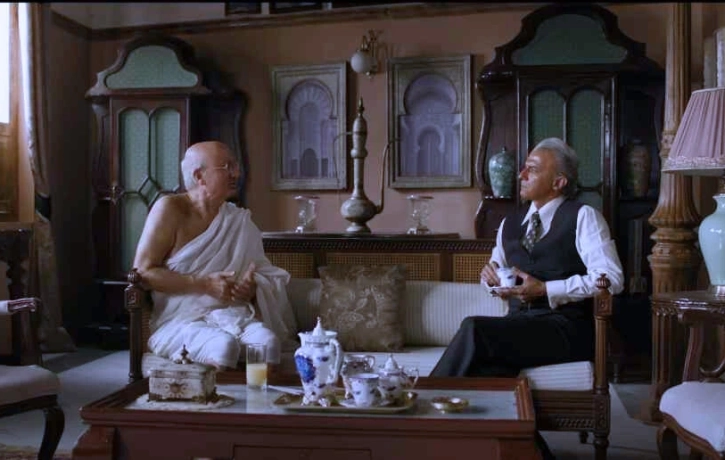Vivek Agnihotri’s latest release, The Bengal Files film, has opened a heated discussion not just among cinephiles but also among historians and families linked to the events of 1946. The movie claims to shine a light on the Great Calcutta Killings, but what’s drawing equal attention is the Gopal Patha portrayal controversy. Did the film stay true to history, or did it lean on dramatic storytelling for impact? Let’s break this down in simple terms.
Why The Bengal Files Film Matters Right Now
Cinema has always been more than entertainment in India. When movies revisit history, they become tools of memory and influence public perception. With The Bengal Files film, Vivek Agnihotri aims to highlight one of the most violent and tragic episodes in Bengal’s history—the riots of 1946.
The film’s timing is crucial because it attempts to re-examine events that shaped India’s partition narrative. However, every time a film touches sensitive history, two questions arise: Is it accurate? And is it fair to those portrayed?
Who Was Gopal Patha and Why His Portrayal Is Controversial
Among the real-life characters adapted in the film, Gopal Patha stands out. He was a figure during the turbulent 1940s in Bengal, remembered differently by different communities. Some saw him as a protector during communal clashes, while others associated his name with violent retaliation.
This is where the Gopal Patha portrayal controversy begins. In The Bengal Files film, he is depicted with certain cinematic liberties that his family strongly disputes. According to his descendants, the portrayal oversimplifies his personality, painting him as either too aggressive or too glorified—neither of which, they argue, captures his complexity.
Such debates are not new in Indian cinema. Every time a real person is shown on screen, especially in the backdrop of historical turmoil, there’s bound to be disagreement. But the intensity of this particular controversy shows how deeply sensitive the subject remains.
Great Calcutta Killings Movie: History vs Cinematic Vision
The Great Calcutta Killings movie narrative forms the core of The Bengal Files. This was one of the darkest chapters in India’s pre-independence history, with communal violence leaving thousands dead. Historians argue that while it’s important for a younger generation to know about this tragedy, the way it’s represented matters.
In films like these, the challenge is balancing storytelling with factual accuracy. Filmmakers often argue that dramatization is necessary to engage audiences. But critics believe that when sensitive history is dramatized too heavily, it risks rewriting memory instead of preserving it.
Bengal Files Historical Accuracy – The Bigger Question
One of the strongest criticisms of the film has been about Bengal Files historical accuracy. Historians point out that not all events shown in the movie are backed by archival records. Some incidents appear exaggerated for cinematic effect.
For instance, timelines are sometimes compressed, and characters are simplified into binaries of “good” and “bad.” While this works in a film format, it doesn’t necessarily reflect the complex socio-political realities of 1946.
The debate then becomes: should films like these prioritize accuracy, or should they prioritize awareness even if that means bending facts a little? That’s a dilemma filmmakers and historians rarely agree on.
Vivek Agnihotri News and the Public Response
Recent Vivek Agnihotri news coverage shows that the director stands firm by his work. He argues that the film is not just a historical project but also a storytelling exercise aimed at today’s audience. According to him, cinema has to “awaken emotions” for people to care about history in the first place.
Supporters of the film feel that without such dramatization, younger generations would never engage with historical episodes like the 1946 riots. On the other hand, critics worry that too much dramatization could distort collective memory, making people believe cinema over actual history.
Why This Debate Is Healthy
While controversies are often seen as negative, in this case, they may serve a purpose. The Gopal Patha portrayal controversy and the larger question of Bengal Files historical accuracy have sparked public curiosity. People are now revisiting old archives, talking to historians, and even questioning the role of films in shaping history.
Read More About – The Bengal Files Controversy: Why Vivek Agnihotri’s Film Was Renamed from The Delhi Files
In an age where news cycles move fast, such in-depth discussions about the past may be exactly what we need. After all, the goal of any historical film should be to make us reflect—not just on what happened, but also on how we remember what happened.
Final Thoughts: How Should Viewers Approach The Bengal Files Film?
If you’re planning to watch The Bengal Files film, here’s a simple approach:
- Treat it as a film first, not a history textbook.
- Use it as a trigger to read more about the Great Calcutta Killings from credible sources.
- Acknowledge both the artistic freedom of the filmmaker and the concerns of families like those of Gopal Patha.
Cinema can’t carry the full burden of history, but it can open the door to conversations. And in that sense, whether you agree with Vivek Agnihotri or not, the film has already achieved something important—it has brought the past back into public dialogue.
References –
- NDTV MOVIES – The Real Gopal Patha vs What His Family Says About His Bengal Files
- India Today – The Bengal Files row explained: Why Vivek Agnihotri’s film is facing backlash

